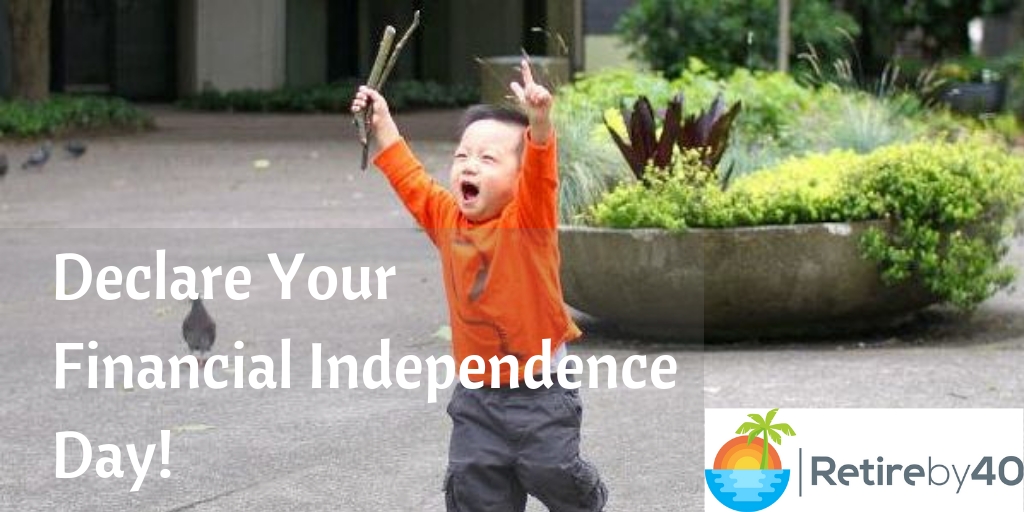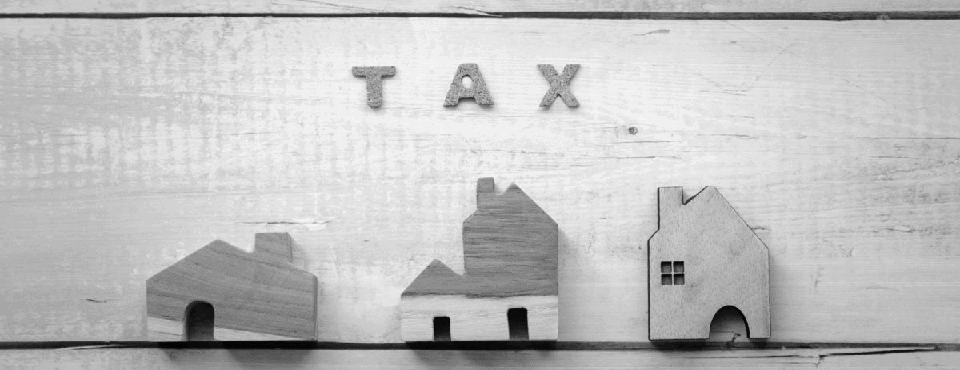Ahh… I love Independence Day! This is my favorite holiday of the year. Mrs. RB40 and our son love Christmas, but the 4th of July is way better. The weather is usually perfect in Portland this time of the year and I can putter around the house all weekend. (Ugh, we had a heatwave this year. It was way too hot.)
I guess I just don’t have the same attachment to Christmas like most people. Christmas feels so commercialized now. It’s all about spending money, plus it is cold and wet. I can’t BBQ in that kind of weather! Independence Day is also the time to celebrate my personal Financial Independence Day. I handed in my 2 weeks’ notice after the 4th of July weekend in 2012. That was one of the best moments of my life.
2024 is turning out to be a nice year. The economy is doing okay. Consumers are struggling, but most of us are surviving. Rent, travel, and eating out are more expensive than ever. If you want to achieve financial independence, you need to watch your budget like a hawk. The stock market is doing well, though. Investors should be happy this year. Last month, our net worth reached a new high. This gave me confidence that FIRE is working as planned. Financial independence is the best. I can work on whatever I want, whenever I want. What are you waiting for? Declare your Financial Independence Day and live life your way.
Declare your Financial Independence Day
What does it mean to declare your Financial Independence Day? Simply, it means you will try to achieve financial independence.
Financial independence (FI) is a concept many aspire to, but only a few achieve. FI is difficult because it can only be achieved with deliberation and perseverance. It is a simple idea, but the execution can take years. Here are the 3 essential steps to financial independence (more in-depth article through this link).
- Track your finance – Most people have no idea what they spend their paychecks on. Money flows through their hands like water. The first step toward financial independence is to reduce unnecessary expenses. This can be done by tracking your spending carefully and getting rid of the expenses that don’t add happiness to your life. The goal is to spend less than you make. Do this consistently and your finances will keep improving. After you have control over spending, you need to increase your income. That is a crucial step also. The journey to FIRE will be much easier if you have a good income.
- Save and invest as much as you can – The next step is to save and invest as much as you can. You need to take step 1 to the next level. You need to spend a lot less than you make. This will determine how fast you can reach FI. If you save 10% of your income, it will take 50 years to achieve FI, i.e., a lifetime. You can reach FI in a much more reasonable timeframe if you save 50% of your gross income. This doesn’t mean you have to live below the poverty line. Just start with 10% and increase it constantly. Eventually, you’ll get to 50%. It’ll get easier as your passive income grows.
- Keep at it – Financial independence is a long game. You need to keep saving and investing consistently. The market can go up and down, but you need to keep adding to your investment. Eventually, your passive income will exceed your expense. That’s financial independence. There are other ways to define financial independence, but this is the safest. You will never run out of money if your passive income covers your cost of living. It’s best to build in a little margin, of course. Your expenses will inevitably increase over time.
Our Financial Independence Journey
Now, I’ll share where we are on our FI journey. Our main goal is to generate enough passive income to exceed our expenses by 2022. We made it! Our passive income exceeded our expenses over the last few years. It’s great. Mrs. RB40 can retire whenever she wants, but she’s still working for now. She isn’t quite ready to retire yet.
Coincidentally, July 4th is the halfway mark of the calendar year. It’s a great time to take stock and see if we’re on track. I do this by checking our FI ratio* which I update every month in the monthly passive income report.
FI ratio = passive income / expense
Once our FI ratio consistently tops 110%, we’d be set financially for the rest of our lives. Here is how we generate our passive income. I update our passive income page every quarter. Check it out if you’re curious.
Passive Income Report


Our passive income did exceedingly well over the past few years.
- 2017 was the first year our passive income exceeded our spending. It was great.
- 2018 was a high-expense year for us. We spent more than usual on travel and we also got a new HVAC. Fortunately, our passive income was also really good. We were really close at 99%.
- 2019 was a great year for us. Our passive income dipped a bit, but our spending decreased significantly. This was mostly due to the decrease in our housing expenses. We moved into our duplex and we could share a lot of housing costs with our tenant.
- 2020 worked out pretty well for us. Our passive income was lower than in previous years, but our annual expense was also much lower. FI ratio was 120%.
- 2021 was a great year financially. We spent very little because we were stuck at home. FI ratio was 140%.
- 2022 was another great year for us. One of our real estate crowdfunding projects was completed and we got a big payout. We spent a lot of money on travel, but it worked out. We had fun and our annual expense wasn’t that bad. FI ratio was 146%, a new high.
- 2023 was tight, but we got over the line.
Let’s go through each line item in detail.
- Real Estate Crowdfunding – Our investment is doing well. However, I’m reluctant to invest more at this time. It’s probably best to wait until the interest rates decrease. Overall, I’m satisfied with RE crowdfunding. It’s much more passive than being a landlord. You can read more detail at my real estate crowdfunding page.
- Rentals – We consolidated down to two rental units in 2019. They are both rented and the tenants are great. I plan to sell when our son goes off to college in 2029. Being a landlord is financially rewarding, but I want to travel more.
- Dividend Income – Our dividend income target is $15,000/year. We aren’t there yet. Recently, I’ve been focusing more on growth stocks. I’ll invest more in dividend stocks when Mrs. RB40 retires.
- Interest–This is the interest from our banking accounts.
- Retirement Accounts– Our retirement accounts are mostly invested in low-cost Vanguard index funds. We are a bit behind because most of the dividends will be paid out in Q4.
You can sign up with CrowdStreet through this link if you’re interested in real estate crowdfunding. My experience with CrowdStreet has been great so far, but your mileage may vary. They have quite a few interesting projects right now. Check them out.
FI Ratio
What about the FI ratio? How are we doing so far?
FI ratio = passive income / expense
2023 FI ratio = $25,617 / $24,734 = 103.6%
Our FI ratio is a bit low this year. We spent more than usual on travel and various kid activities. Fortunately, our fixed cost is low. You can read more about how we minimize our big 3 expenses here. We should be able to improve our FI ratio before the end of 2023. Our bond payment should come in by December.
Record and Projection
Let’s take a look at our FI ratio over the last few years.
- 2015: 54% ($28,415/$53,037)
- 2016: 71% ($38,222/$54,000)
- 2017: 109% ($53,664/$49,131)
- 2018: 99% ($56,918/$56,638)
- 2019: 122% ($56,204/$45,896)
- 2020: 120% ($48,200/$40,030)
- 2021: 140% ($60,469/$43,261)
- 2022: 146% ($82,086/$54,607)
- 2023: 103% ($66,806/$65,063)
Here are our targets for future years.
- 2024: target 100%
- 2030: target 110%. Mrs. RB40 will be retired by then. Our passive income should be higher, but our expenses will increase too. I think 110% is a good long-term goal.
The FI ratio looks good for the coming years. Like most families, our annual expenses have been increasing due to inflation. Fortunately, our passive income kept up. Things are working out as I planned!
Okay, what are you waiting for? Declare your Financial Independence Day and GO FOR IT! Financial independence can take a long time. The sooner you start the earlier you’ll get there. Don’t wait.
Do you keep track of your passive income vs expense? The ratio should improve every year if you want to reach Financial Independence.
If you plan to track your passive income, consider signing up with Empower to help manage your investment accounts. They are very useful and I can get all my passive income data from one site. That’s much easier than logging into every brokerage, bank, and retirement account separately. It’s a great site for DIY investors.
Enjoy the long weekend!
Passive income is the key to early retirement. This year, Joe is investing in commercial real estate with CrowdStreet. They have many projects across the USA so check them out!
Joe also highly recommends Personal Capital for DIY investors. They have many useful tools that will help you reach financial independence.
Publisher: Source link











